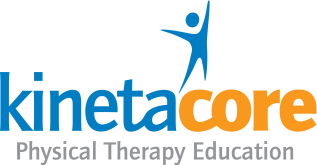oxygen domain was triggered too early. This is usually an indicator for some code in the plugin or theme running too early. Translations should be loaded at the init action or later. Please see Debugging in WordPress for more information. (This message was added in version 6.7.0.) in /nas/content/live/movementvail/wp-includes/functions.php on line 6121
BECAUSE EXPERTISE AND EXPERIENCE MATTER!!!
Trigger point dry needling requires highly specialized training. Dr. Scott Wacker is the most experienced Dry Needling Specialist in the Vail Valley and responsible for training hundreds of professionals internationally with a group called Kinetacore. He has also trained the majority of local area therapists and holds the expertise necessary to produce the best results.
Trigger Point Dry Needling a.k.a. Functional Dry Needling, Intramuscular Manual Therapy, Intramuscular Stimulation is a highly effective therapy method for the treatment of pain and muscle dysfunction. It is performed by primarily physicians and physical therapists who are specifically trained in the advanced technique. The approach is based on modern medical research (see this blog) and Western anatomical and physiological principles. The technique utilizes fine filiform needles to release dysfunctional muscles. It has no origin in and is much different than acupuncture. In fact, most physical therapists performing Dry Needling have more than twice the college, graduate school, and advanced training versus an acupuncturist.
Dr. Janet Travell, M.D. first described trigger point injections in the early 1940s. Injections are performed by injecting trigger points with saline or analgesics. More recently it has been shown that it is not the substance being injected providing the therapeutic benefit, but rather the mechanical stimulus of the needle itself. When a needle tip comes into contact with a trigger point, the characteristic ‘local twitch’ is noted by the clinician and the client. This local twitch is involuntary and it has been shown that it is the elicitation of local twitch responses that is the most important aspect in obtaining a successful therapeutic outcome. There are a number of hypotheses as to why Dry Needling works. Dry needling and the associated local twitch responses may mechanically disrupt the contracted nature of the trigger point. It stimulates certain sensors in the body which modulate pain signals. Dry Needling also causes local biochemical changes and increased blood flow in the dysfunctional muscle.
The benefits of Dry Needling include a decrease in the tightness, pain, and movement dysfunction associated with a particular muscle. Often times an immediate and significant improvement is noted. Generally patients who receive Dry Needling experience quicker and longer lasting results when compared to those treated with conventional techniques. Dry Needling is tolerable for most, but not all, people. A limited amount of muscle soreness is to be expected for 1-2 days, after which the soreness resolves. At Movement Physical Therapy, Dry Needling is never used as an isolated treatment; it is combined with further methods which address movement dysfunction that may be present. There are often other possible contributing factors to pain including the presence of joint or spinal dysfunction, postural imbalances, poor movement patterns and poor posture and body mechanics.
If you suffer from pain, discomfort, or tightness that has a musculoskeletal contribution, I invite you to consider Dry Needling as a treatment option. Dry Needling has been shown to be especially effective in the treatment of low back and neck injuries and pain, headaches, tendinopathies (tendinitis, tendinosis), plantar fasciitis, chronic pain, and various other musculoskeletal issues that have not responded to traditional care. If you’ve had unsatisfactory results from other practitioners performing Dry Needling, you may want to consider their skill and history. Dr. Scott Wacker has success when numerous others have failed.
